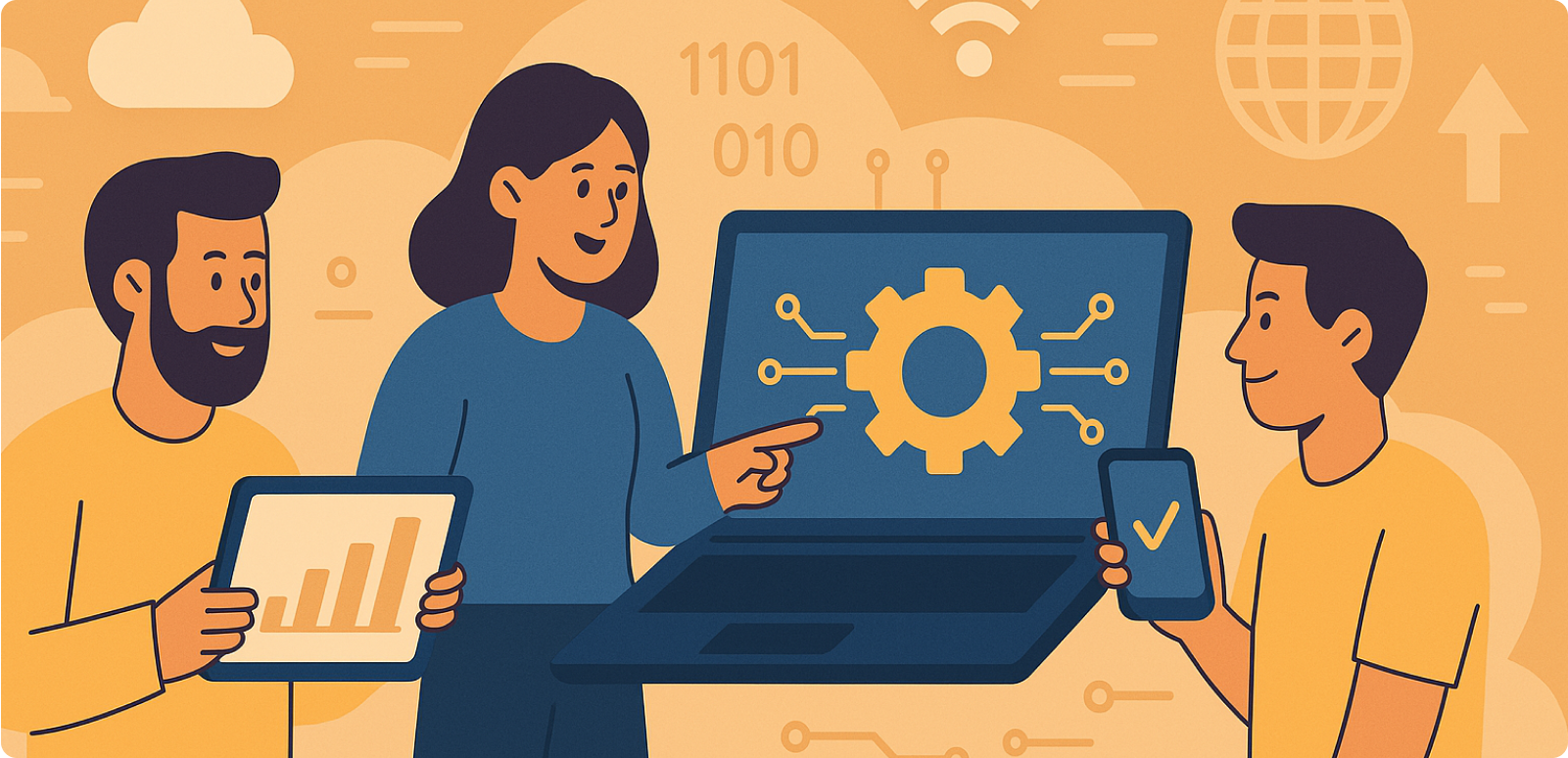The Digital Transformation Imperative: More Than Just a Buzzword

Digital transformation isn’t just about fancy tools—it’s about reinventing how businesses operate, make decisions, and serve customers.
The Digital Shift: Not Just a Trend – A Business Lifeline
Picture this: You step into your favorite restaurant, order your meal through a sleek digital kiosk, and within minutes, your food arrives—hot, fresh, and just the way you like it. Behind the scenes, the restaurant manager glances at a single dashboard, effortlessly tracking sales, managing inventory, and optimizing staffing. Everything runs like clockwork.
Now, rewind a few years. That same restaurant relied on manual order-taking, messy spreadsheets, and best-guess inventory management. Orders got mixed up, stockouts were a nightmare, and financial insights were a distant dream. What changed? Digital transformation.
But here’s the thing—this shift isn’t just for restaurants. Whether in retail, manufacturing, healthcare, or finance, going digital is no longer optional. It’s the difference between thriving and merely surviving.
What Does Digital Transformation Really Mean?
Let’s bust a myth: Digital transformation isn’t just about installing fancy software or upgrading hardware. It’s about reinventing the way businesses operate, make decisions, and connect with customers.
Consider a restaurant chain where each outlet ran independently – manual operations, disconnected data, and decisions based on gut feelings rather than facts. The result? Inefficiencies, losses, and frustrated customers.
The fix? A cloud-based POS system that seamlessly integrated operations across all locations. The impact was game-changing:
✅ Real-time Visibility – Managers could track sales and performance across outlets at a glance.
✅ Smarter Inventory Management – Data-driven insights helped reduce waste and optimize stock.
✅ Financial Control & Compliance – Automated reporting made cost tracking a breeze, while GST-compliant billing simplified tax processes.
✅ Workforce Optimization – Smarter labor planning reduced unnecessary costs and improved productivity.
And this isn’t just an F&B story. Every industry has an opportunity to harness digital transformation for efficiency, innovation, and long-term growth.
The Biggest Challenge? It’s Not Technology—It’s People.
Let’s be honest – change is scary. One of the biggest roadblocks to digital transformation isn’t the tech itself, but the people who fear it.
This is a common challenge across industries. In many organizations, younger employees are eager to embrace new digital tools, while more experienced team members – who have been around for years, may be skeptical. Technology can sometimes be seen as a disruption rather than an enabler.
Instead of forcing the change, successful transformations take a different approach: listening to concerns, involving teams in decision-making, and demonstrating how new tools enhance, rather than replace, their expertise.
The result? Resistance turns into advocacy. The same people who once hesitated about the transition become its biggest champions.
Lesson learned? Digital transformation isn’t just about upgrading systems; it’s about upgrading mindsets.
The Takeaway: Adapt or Get Left Behind
If there’s one certainty in business today, it’s this: Change is inevitable. The companies that thrive are the ones that embrace it, use data wisely, and create a culture of adaptability.
So, ask yourself:
💡 Are decisions being made based on data, or outdated instincts?
💡 Is the team empowered by technology, or bogged down by inefficiencies?
💡 Is the generational gap within the workforce being bridged to drive transformation collaboratively?
Digital transformation isn’t about leaving the past behind—it’s about blending experience with innovation to create something even better.
The future belongs to those who dare to evolve. Is your business ready to take the leap?
Let’s talk. The transformation starts today.